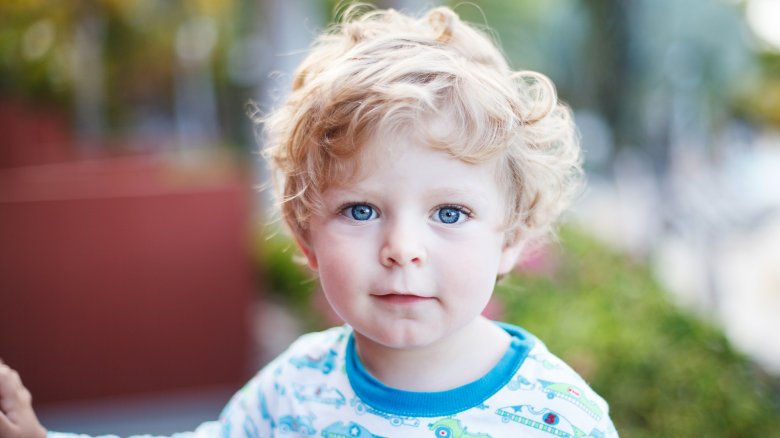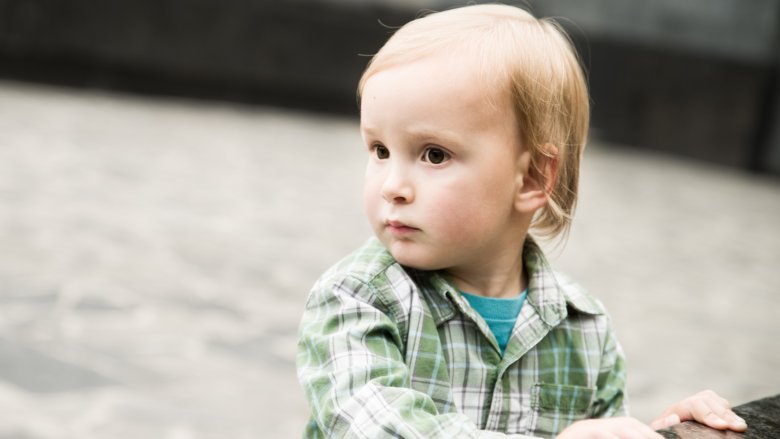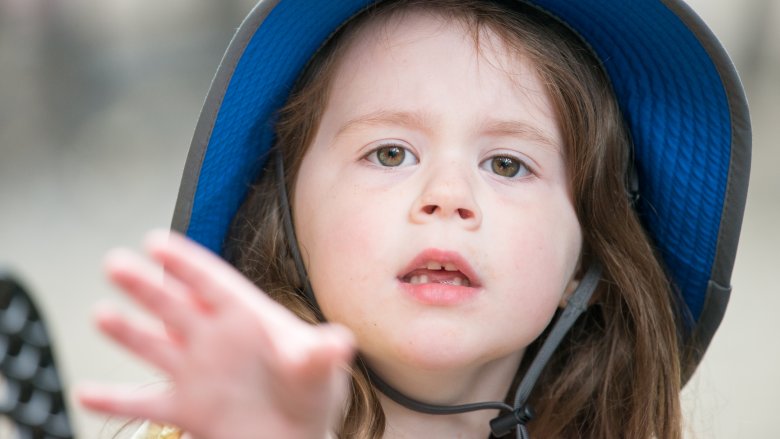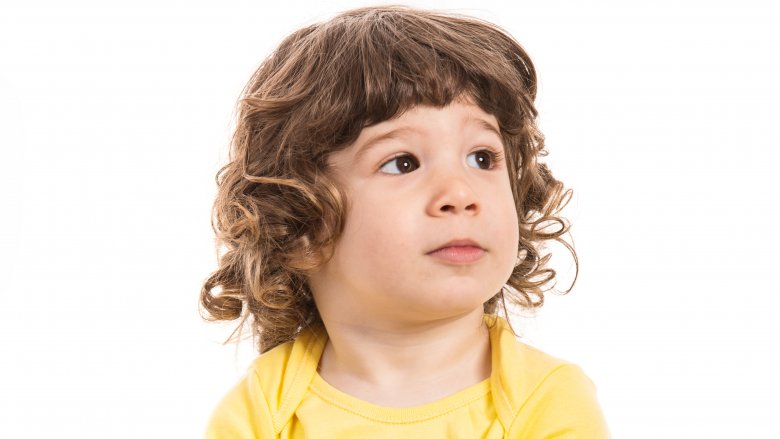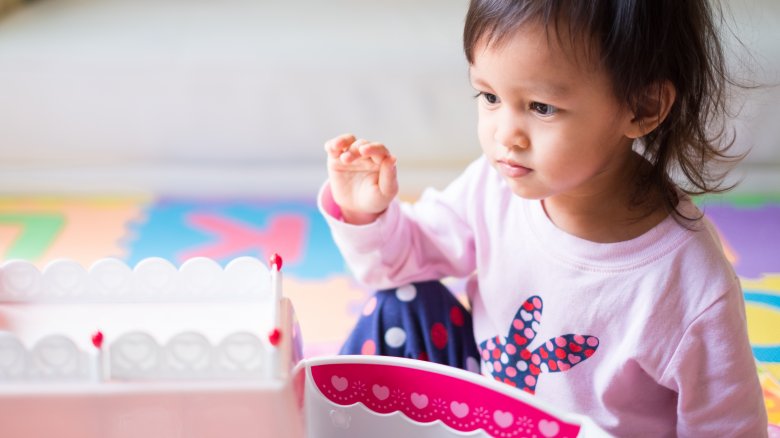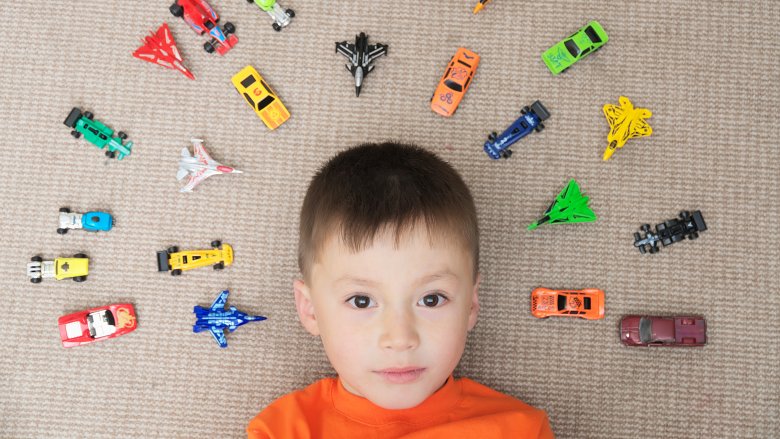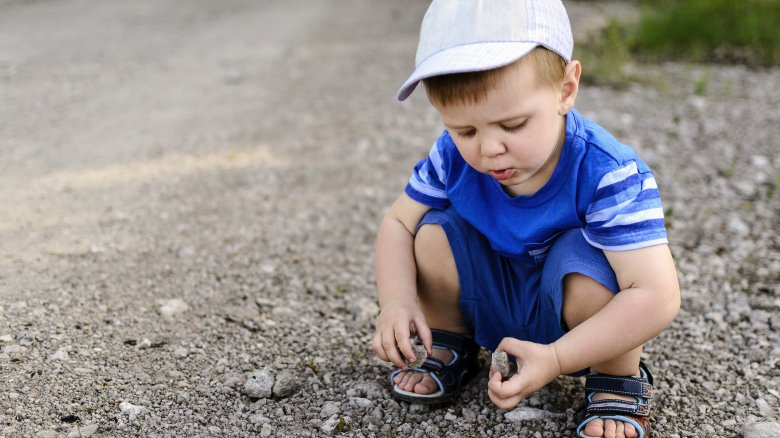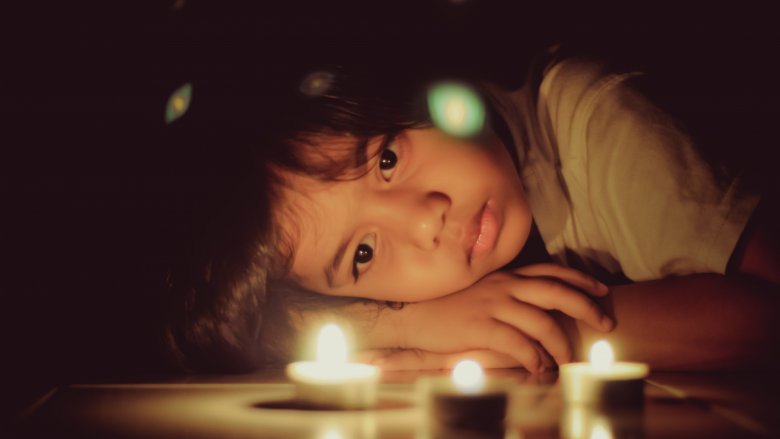Signs Your Toddler May Have Autism
Autism Spectrum Disorder is a developmental disorder that the Centers for Disease Control and Prevention (CDC) estimates impacts nearly 15 percent of children (about one in every 68). While autism is present in all racial, ethnic, and socioeconomic groups, the CDC reports it occurs 4.5 times more often in boys than in girls. According to the Autism Navigator, the signs of autism are usually seen in early childhood. Although there is no cure for autism, early intervention can help kids increase their development skills to help them do well in school, get involved in activities they enjoy, go on to college, and find jobs in adulthood.
While the signs and symptoms of autism vary from child to child, I spoke with Dr. Latha Soorya from the Autism Assessment, Research, Treatment, and Services Center at Rush University Medical Center about the signs to look for that may indicate your toddler has autism. Dr. Soorya was quick to remind me of the adage, "If you've met one person with autism, you've met one person with autism," meaning every person's experience with autism is different. That said, these are some signs to watch for.
His speech is delayed
One of the first things Dr. Soorya impressed upon me is that normal development happens in a "huge range" but told me that "the signs parents most often are concerned about when they come to their primary care physicians or even specialists like us, they usually come to us when their child isn't speaking." Research has shown that children with autism are also less likely to babble as infants or do so at lower frequency than children without autism.
Dr. Soorya noted that parents have many ways of rationalizing a child not speaking (like they have an older sibling who is speaking for them, boys speak later, etc.) and that it's true that it doesn't always mean a child has autism. Still, when a child does have autism, typically that's the symptom that has led to parents bringing the child to the doctor.
Dr. Soorya told me that often this occurs if a child is between 2 and 3-and-a-half years old and not speaking. Just like not speaking doesn't automatically indicate autism, autism doesn't always require a speech delay or lack of speech development. "Many kids develop speech in some form other another. Some develop first words and don't get to phrases. Some go from no babbling straight to phrases. It's a wide range what [speech delay] is. Early on, it's usually a kid who is not speaking that we see sooner."
She doesn't use gestures
Even if it isn't time for your child to be talking or babbling, there could be signs something is going on. According to Dr. Soorya, language isn't the only way children communicate. "There are subtle things kids do to communicate from an early age," she said. "They use gestures like putting their hand out, waving, blowing a kiss." Dr. Soorya said gestures like these happen early, starting typically just before 12 months, and explode from there. "If they're not using speech, kids without autism are using other ways of communicating with their body language," she said, adding that "if the kid is not connecting well and they're also not speaking, if they're not communicating with body language" you may want to talk to their doctor.
He doesn't look at you
This doesn't mean that your child has never looked at you or other people, but that they tend to not look directly at you or it's hard to get them to look at you when you call their name or are trying to get their attention. According to Dr. Soorya, this is another example of how children with autism struggle with communication and sharing their world with other people.
Researchers for a study in the Journal of the American Academy of Child & Adolescent Psychiatry looked at how often children at higher risk for autism looked at faces (what they termed "gaze to faces") compared to those at lower risk of autism. They found that at six months there weren't many differences, but by 12 months, the children at higher risk of autism showed much less frequent gaze to faces. This is why it's important to notice not only things your child has always done over the course of their development, but to note any changes in how they react, respond, or interact with you.
She doesn't pretend or mimic
Dr. Soorya told me that by the time a child is 3-5 years old, they should be showing "creative and imaginative acts," whether playing with dolls and having the dolls replay things they've seen, playing with action figures, trains, etc. While some research has found that pretend play is intact in children with autism, other research has found that children with autism struggle with spontaneous pretend play, meaning they can only pretend under the instruction or supervision of an adult.
"We also want to see kids mimicking other people, not just TV shows," said Dr. Soorya. "When girls see their moms stand a certain way or boys see their moms do a certain thing, you can see kids mimicking it. That's a really important skillset too. Kids learn through watching, learning, and practicing their own way of doing it." This is supported by newer research, which suggests that by helping children with autism engage in pretend play, it may actually benefit them foster spontaneous playfulness.
He is overly occupied by order and repetition
Dr. Soorya also noted that it's important your child's play is imaginative and not repetitive (such as just lining up the trains or dolls). "When mimicking happens in a very routinized way or limited ways around an intense interest, that's when we start to get a little concerned," she said. Repetition and order may also take the form of word repetition in speech as well as "rigidity to routines" meaning that when something happens that disrupts the typical everyday routine, children with autism may find it difficult to adapt to the change. This difficulty adapting may take the form of temper tantrums and aggression, especially in older children, but repetition and stereotyped behavior in children with autism has been seen as early as infancy.
She has excessive interest in one thing
Every parent knows that all kids sometimes develop strong interests in a specific thing (like singing every Moana song over and over again), but sometimes their interest in one thing becomes excessive. "Thomas the Train used to be a big one," said Dr. Soorya. "Lining up Thomas, reenacting lines from the movie, carrying around the train. Then they would have a hard time moving on to other trains or other vehicles."
Dr. Soorya said it becomes a problem when this intense interest expands into other things so much that they can't talk about other topics, need to have specific toys or objects with them wherever they go, or need to watch the movie while they're eating or they won't eat. "It grows from a little interest to all encompassing. When you try to move on from there it becomes a struggle. When it starts to really get in the way of day to day activities, that's when it becomes a problem."
According to the Interactive Autism Network, these types of "restricted interests" can also include things like "watching a fan spin around for hours; flipping the flag on a toy mailbox up and down again and again; taking a spoon or other inanimate object everywhere as though it were the most special thing in the world" and countless others.
He doesn't share interest with you or other kids
According to Dr. Soorya, a typically developing child will want you to be involved in or see the things they are interested in. "They point, they look at you and make sure you're looking at the same thing they're looking at (called shared attention)," she told me. Children with autism often don't seek this shared attention or show interest in wanting you to be involved in their play. The same goes for showing an interest in other kids.
"They don't have to approach them," Dr. Soorya said, "but looking at other children, being curious about what other kids are doing is an important developmental skill." This lack of shared interest is suggested as the reason many people with autism, including children, struggle with conversational skills and research has shown that when it is addressed, it can be improved.
She has sensory-related interests or reactions
You may have heard about children with autism engaging in behaviors like hand flapping or other sensory-related behaviors that signal autism. Dr. Soorya pointed out that all kids engage in these behaviors to some extent, so don't get too concerned if you noticed your son or daughter flapping their arms or waving their hands for the first time.
"The kids who end up developing autism are the kids who don't grow out of it or whose reactions are really intense," she told me. "I've seen typically developing kids who get really fascinated with turning a light switch on and off. Those kids can easily move on to something else." Dr. Soorya said that it's important to look at a child in terms of expected development. "It's really how often they do it, how much does it interfere, how much they can move on from it? When do they do it?" She explained that occasional hand flapping in an excited 2-year-old that happens "once in a blue moon" is different from hand flapping that a 10-year-old engages in every day.
Dr. Soorya also explained that "stickiness" when a kid is unable to move on "is a general characteristic we look out for in really young kids" with autism. Like with changes to routine, when a child with autism is forced to move on from an interest, it may result in behavioral issues like tantrums. "When you see the sensory interest tied to behavioral issues that are really impacting the family's day to day life, those can be signs they need help and a further diagnosis," she told me.
Not all signs point to autism
Because autism is a developmental disorder, that means it has overlap with other developmental disorders. Even if your child is displaying several of these signs, that doesn't necessarily mean it is autism. It may mean there is another issue, or that your child has a developmental delay on the spectrum of normal development. Dr. Soorya also noted that adopted children who have been exposed to trauma may also display some of these symptoms. "Nothing is diagnostic of autism for sure. We're talking about a very broad spectrum," she said.
Talk to your doctor if you're concerned
Dr. Soorya told me that pediatricians should be screening for autism symptoms at all the well-child checkups, so it's very important that parents track behaviors they're worried about and take them to the pediatrician. "Do the in-depth screening questionnaires," Dr. Soorya said. "Pediatricians' offices are supposed to be giving the Modified Checklist for Autism in Toddlers (MCHAT) at many well-child checkups." She noted that some pediatrician offices are better than others about doing it regularly, but "when they do it, it's a very strong screening tool for autism and other speech/language issues."
So if you have concerns and your pediatrician isn't giving the MCHAT, ask for it. There is also a version online, but it is meant only as a guide or tool to help you talk to your child's doctor, and is not meant to provide a diagnosis. If you have questions or concerns about these signs or others, always ask your doctor.
